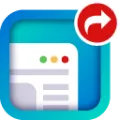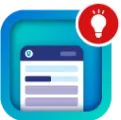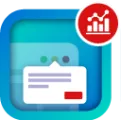Design the Field Layout forReports Created From Your Custom Report Type
- From Setup, enter Report Types in the Quick Find box, then select Report Types to display the All Custom Report Types page.
- Select the custom report type you want to edit and click Edit Layout on the Fields Available for Reports section.You can click Preview Layout to preview which fields will display onthe Select Columns page of a report customized orrun from this report type. Note When previewing the layout, allfields and objects are displayed, including fields and objectsyou may not have permission to access.However, you cannot access any data stored in the fieldsor objects that you do not have permission toaccess.
- Select fields from the right-hand box and drag them toa section on the left.Tip You can view aspecific object's fields by selecting an object from the View drop-down list.
- Optionally, click Add fields related via lookup to display the Add Fields Via Lookupoverlay.From here you can add fields via the lookuprelationship the object selected in the Viewdrop-down list has to other objects.A lookup field is a field on an object that displays informationfrom another object. For example, theContact Name field on anaccount.A custom report type can contain fields available via lookup throughfour levels of lookup relationships. Forexample, for an account, you can get the accountowner, the account owner's manager, the manager's role, andthat role's parent role.You can only add fields via lookupthat are associated with objects included inthe custom report type. For example, ifyou add the accounts object to the custom report type, thenyou can add fields fromobjects to which accounts have a lookup relationship.Selecting a lookupfield on the Add Fields Via Lookup overlay mayallow you to access additional lookupfields from other objects to which there is a lookuprelationship. For example, if youselect the Contact Name field from cases, youcan then select the Account field from contacts because accounts have a lookuprelationship to contactswhich have a lookup relationship to cases.The fields displayed in theAdd Fields Via Lookup overlay do not includelookup fields to primary objects. For example,if accounts are the primary object on your customreport type, and contacts are thesecondary object, then the Add Fields Via Lookup overlay does notdisplay lookup fieldsfrom contacts to accounts.Fields added to the layout via the Add fields related vialookup link are automatically included inthe section of the object from which theyare a lookup field. For example, if you addthe Contact field as a lookup fromaccounts, then the Contact field is automatically included in the Accountssection. However,you can drag a field to any section.Fields added via lookup automaticallydisplay the lookup icon on the field layoutof the custom report type.Reduce the amount of time it takes a user to find fields to reporton by grouping similar fields together oncustom report types' field layouts. You can createnew page sections in which to group fieldsthat are related to one another, and you can groupfields to match specific detail pages andrecord types.If you include activities as the primary object on a custom reporttype, then you can only add lookup fieldsfrom activities to accounts on the select columnlayout of the custom report type.
- A lookup field is a field on an object that displays informationfrom another object. For example, theContact Name field on anaccount.
- A custom report type can contain fields available via lookup throughfour levels of lookup relationships. Forexample, for an account, you can get the accountowner, the account owner's manager, the manager's role, andthat role's parent role.
- You can only add fields via lookupthat are associated with objects included inthe custom report type. For example, ifyou add the accounts object to the custom report type, thenyou can add fields fromobjects to which accounts have a lookup relationship.
- Selecting a lookupfield on the Add Fields Via Lookup overlay mayallow you to access additional lookupfields from other objects to which there is a lookuprelationship. For example, if youselect the Contact Name field from cases, youcan then select the Account field from contacts because accounts have a lookuprelationship to contactswhich have a lookup relationship to cases.
- The fields displayed in theAdd Fields Via Lookup overlay do not includelookup fields to primary objects. For example,if accounts are the primary object on your customreport type, and contacts are thesecondary object, then the Add Fields Via Lookup overlay does notdisplay lookup fieldsfrom contacts to accounts.
- Fields added to the layout via the Add fields related vialookup link are automatically included inthe section of the object from which theyare a lookup field. For example, if you addthe Contact field as a lookup fromaccounts, then the Contact field is automatically included in the Accountssection. However,you can drag a field to any section.
- Fields added via lookup automaticallydisplay the lookup icon on the field layoutof the custom report type.
- Reduce the amount of time it takes a user to find fields to reporton by grouping similar fields together oncustom report types' field layouts. You can createnew page sections in which to group fieldsthat are related to one another, and you can groupfields to match specific detail pages andrecord types.
- If you include activities as the primary object on a custom reporttype, then you can only add lookup fieldsfrom activities to accounts on the select columnlayout of the custom report type.
- Arrange fields on sections as they shouldappear to users. Fields notdragged onto a section will be unavailable to users when they generatereports from this report type.
- Click Preview Layout and use thelegend to determine which fields are included on the layout,added to the report by default, and addedto the layout via a lookup relationship.Warning Users can view roll-up summaryfields on reports that include data from fields they do not haveaccess to view. For example, auser that does not have access to view the Price field on an opportunity productcan view the Total Price field on opportunityreports if he or she has accessto the Total Price field.
- To rename or set which fields are selected by default forusers, select one or more fields and click EditProperties.Click the Checked by Default checkbox nextto one or more fields. Fieldsselected by default automatically display the checkbox icon()on the field layout ofthe custom report type.Change the text in the Display As field nextto the field you want to rename.Note Renamedfields from standard objects, as well as renamed standard objects,do not displayas such on the field layout of the custom report type. However, renamedfields fromstandard objects and renamed standard objects do display their newnames on the report andthe preview page, which you can access by clicking Preview Layout.
- Click the Checked by Default checkbox nextto one or more fields. Fieldsselected by default automatically display the checkbox icon()on the field layout ofthe custom report type.
- Change the text in the Display As field nextto the field you want to rename.Note Renamedfields from standard objects, as well as renamed standard objects,do not displayas such on the field layout of the custom report type. However, renamedfields fromstandard objects and renamed standard objects do display their newnames on the report andthe preview page, which you can access by clicking Preview Layout.
- To rename the sections, click Edit next to an existing section, or create a new section byclicking Create New Section.
- Click Save.





